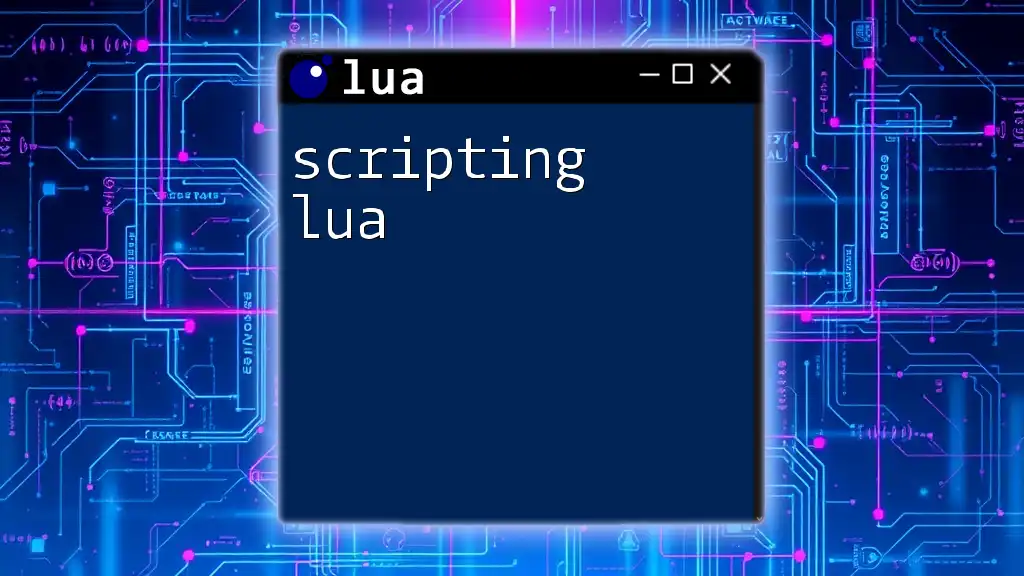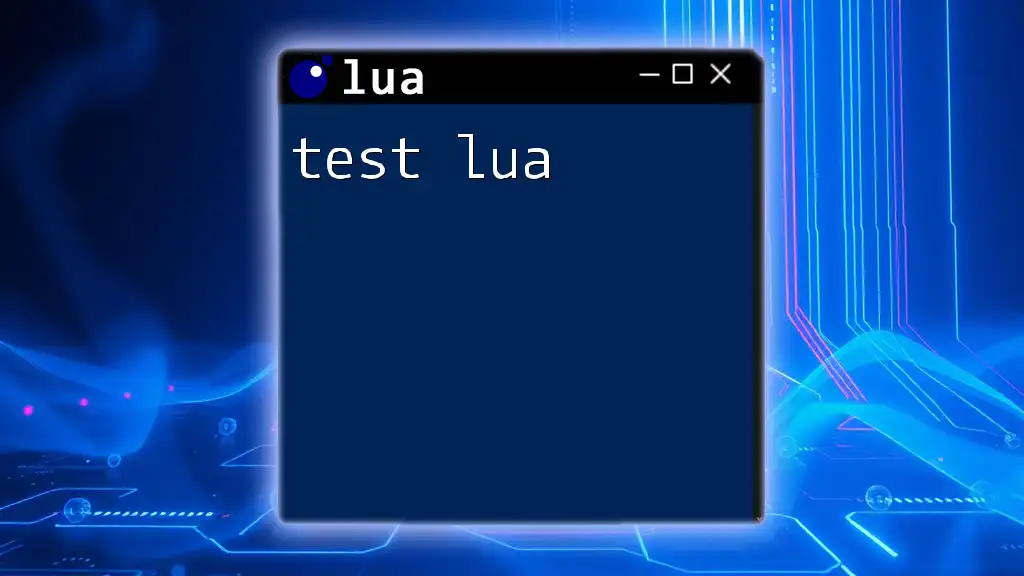Coroutines in Lua allow you to manage multiple tasks by enabling cooperative multitasking through suspending and resuming execution at specific points in the code.
function coroutineTask()
for i = 1, 5 do
print("Coroutine count: " .. i)
coroutine.yield()
end
end
co = coroutine.create(coroutineTask)
for i = 1, 5 do
coroutine.resume(co)
end
What Are Coroutines?
Coroutines are a powerful programming construct that allows multiple routines to yield execution to each other. In Lua, this provides a way to implement cooperative multitasking, enabling asynchronous programming and the management of complex flows without the complexity of traditional threading.
Why Use Coroutines in Lua?
Coroutines offer several key advantages over conventional threading methods:
- Lightweight: Coroutines are more efficient than threads since they do not incur the overhead associated with thread management.
- Simplicity: They are easier to understand and manage, allowing developers to write code in a linear style while still achieving asynchronous behavior.
- Control Flow: With coroutines, you have precise control over execution, as you determine when to suspend and resume routines.
Common use cases for coroutines include animations, user interfaces, and any application that requires a pause and resume feature.

Understanding the Basics
What Is a Coroutine?
A coroutine can be thought of as a non-preemptive thread. Unlike regular functions, which execute from start to finish and return control upon completion, coroutines can be paused (yielded) and resumed later, making them ideal for scenarios requiring concurrent operations without traditional threading.
The Lifecycle of a Coroutine
A coroutine has a distinct lifecycle comprising different states:
- New: The coroutine has been created but not yet started.
- Suspended: The coroutine is paused at a yield statement.
- Running: The coroutine is currently executing.
- Dead: The coroutine has completed its execution.
Understanding these states is crucial for effectively managing coroutines in Lua.

Creating and Managing Coroutines
How to Create a Coroutine
To create a coroutine in Lua, you use the `coroutine.create()` function along with a function that defines the coroutine's behavior. Here’s a simple example:
function coroutineFunction()
print("Coroutine started")
coroutine.yield()
print("Coroutine resumed")
end
local co = coroutine.create(coroutineFunction)
In this example, `coroutineFunction` starts by printing a message. It then yields control back to the main program, where `co` holds the reference to the created coroutine.
Starting Coroutines
To start a coroutine, you use the `coroutine.resume()` function. This function starts executing the coroutine, allowing it to run until it hits a yield statement or completes.
coroutine.resume(co) -- Starts the coroutine
After calling `coroutine.resume(co)`, the output will be:
Coroutine started
The coroutine is now paused until we call `coroutine.resume(co)` again.
Yielding Control with `coroutine.yield()`
Yielding allows the coroutine to pause its execution and return to the calling function. This is particularly useful for controlling flow in complex scenarios. Here’s how yielding works:
function coroutineFunction()
print("Start")
coroutine.yield("Yielding control")
print("End")
end
When you first call `coroutine.resume(co)`, it prints "Start" and then yields control, allowing us to capture this state and perhaps process something else before resuming.

Managing Coroutine Execution
Resuming Coroutines
After yielding, you can resume a coroutine by calling `coroutine.resume()` again. This allows it to continue execution from where it was paused.
You might also want to check the status of the coroutine to understand its current state:
print(coroutine.status(co)) -- Prints "suspended"
Error Handling in Coroutines
Error handling is important in coroutine management. Lua provides a way to gracefully handle errors using `pcall`. Using this function allows you to catch any errors that occur during the coroutine execution:
local status, err = pcall(coroutine.resume, co)
if not status then
print("Error: ", err)
end
In this example, `pcall` wraps the coroutine call. If an error occurs, it will not crash the program but will instead return the error message, enhancing the robustness of your applications.

Practical Applications of Coroutines
Using Coroutines in Asynchronous Programming
Coroutines can simulate asynchronous behavior effectively. For instance, consider a scenario where you need to read from a file and process data. Instead of blocking the main execution while the file is read, you can yield control to other operations during the read:
function fetchData()
print("Reading data...")
coroutine.yield() -- Simulate waiting time
print("Data read complete!")
end
State Machines with Coroutines
Coroutines are exceptionally well-suited for implementing state machines. A basic example could look like this:
function stateMachine()
coroutine.yield("State 1")
coroutine.yield("State 2")
return "Final State"
end
Each call to `coroutine.resume()` would transition the state, allowing for dynamic and manageable state handling throughout the program.
Games and Simulation
In game development, coroutines can manage game loops and animations. For example, a coroutine could handle the timing for animations or events, leading to cleaner code and decreased complexity when managing player input and game state.

Advanced Coroutine Techniques
Coroutine Libraries and Tools
Lua's ecosystem supports various libraries that leverage coroutines for enhanced functionality. For example, libraries like Luvit or the Love2D framework use coroutines to handle asynchronous operations elegantly.
Coroutines and Performance
Coroutines improve performance in Lua applications by reducing the overhead associated with thread management. They allow for greater concurrency without the complexities involved in cross-thread communication, making them an invaluable asset in performance-critical applications. Benchmark your implementations to see tangible results when you switch to coroutines.

Conclusion
In summary, coroutines in Lua grant developers a flexible mechanism for handling asynchronous programming, managing state efficiently, and simplifying complex control flows. Their lightweight design provides an excellent alternative to traditional threading techniques.
Further Resources
For those looking to deepen their understanding of coroutines, consider exploring additional resources like the official Lua documentation, online tutorials, and programming books focusing on Lua. Experimenting with coroutines in projects will cement your knowledge and reveal their versatility.
Call To Action
Start implementing coroutines in your own projects today! Try creating simple examples, then expand your horizons by integrating coroutines into more complex systems. Stay tuned for more tips and tutorials to enhance your Lua programming skills!

















